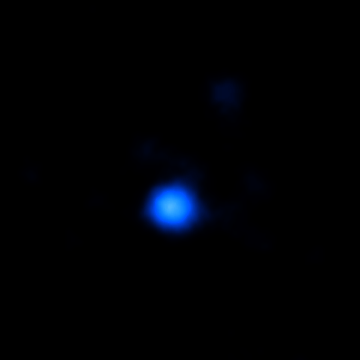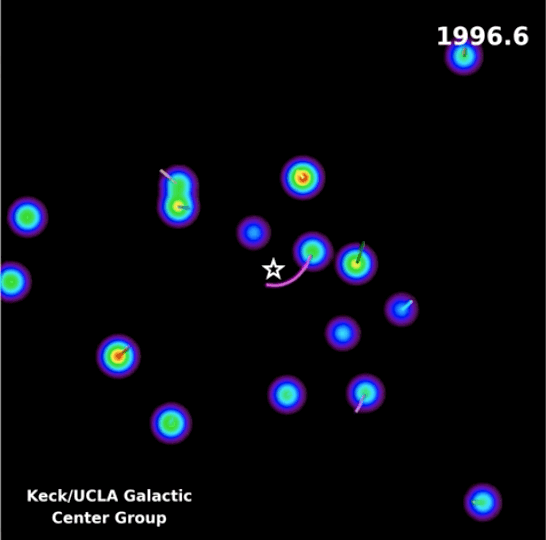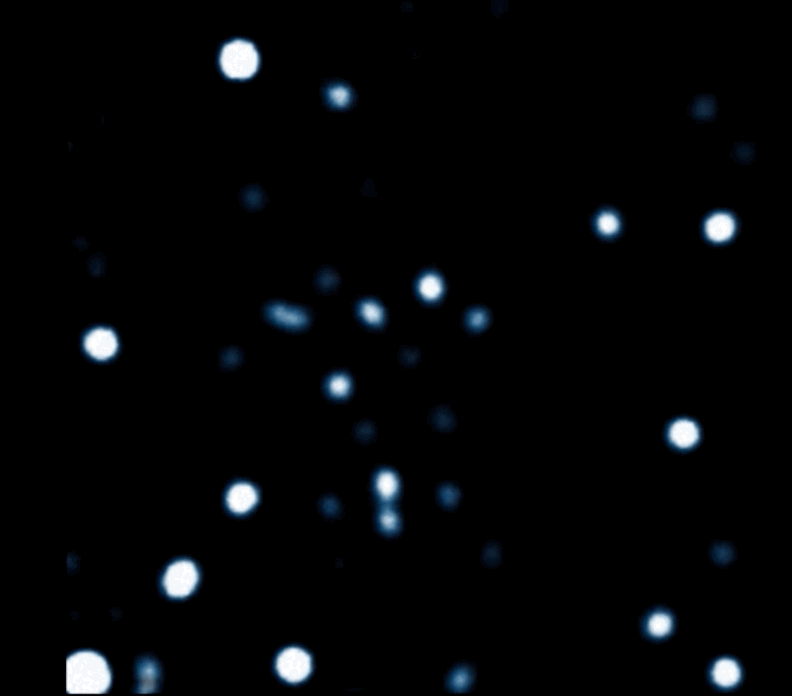How Did They Get the Image of the Black Hole
/cdn.vox-cdn.com/uploads/chorus_image/image/58244329/18199018792_ac1c461035_o.0.jpg)
Most images of black holes are illustrations. Here's what our telescopes actually capture.
Finally, next week, we may get to see one up close for the first time.
By Updated
Update : In April 2019, scientists published the first-ever image of a black hole. You can see it here , and learn more about how this historic image was made.
Impossibly dense, deep, and powerful, black holes reveal the limits of physics. Nothing can escape one, not even light.
Even though black holes excite the imagination like few other concepts in science, the truth is that no astronomer has actually seen one. We've "heard" them, so to speak, as scientists have recorded the gravitational waves (literal ripples in spacetime) emanating from black holes that collided with one another billions of years ago.
But any photo you've seen of a dark mass warping spacetime … well, that's just an illustration. Like this one:
:no_upscale()/cdn.vox-cdn.com/uploads/chorus_asset/file/6084223/15084150039_b2a8cef3d1_k.jpg)
This soon may change. On April 10, a collaboration called the Event Horizon Telescope is set to announce the results of an effort to capture an image of the supermassive blackhole at the center of our galaxy. The National Science Foundation is describing the results as "groundbreaking." And if an image is produced, it will be a remarkable accomplishment. Because as massive black holes are, they're actually incredibly hard to see up close.
Why no astronomer has ever seen a black hole with a telescope
Black holes are born when massive stars collapse in on themselves and create a region of gravity so intense that not even light can escape its grasp. Astronomers also speculate that some black holes may have been formed in the early chaotic universe after the Big Bang.
The biggest problem with trying to see a black hole is that even the supermassive ones (with masses millions of times heavier than our sun) are relatively tiny.
"The largest one in the sky [is] the black hole in the center of the Milky Way," Dimitrios Psaltis, an astrophysicist at the University of Arizona, explained in an email. "And taking a picture of it would be equivalent to taking a picture of a DVD on the surface of the moon."
What's more, because of their strong gravity, black holes tend to be surrounded by other bright matter that makes it hard to see the object itself.
That's why when hunting for black holes, astronomers don't usually try for direct observation. Instead, they look for evidence of the effects of a black hole's gravity and radiation.
"We typically measure the orbits of stars and gas that seem to circle around very dark 'spots' in the sky and measure how much mass is there in that dark spot," Psaltis says. "If we know of no other astrophysical object that can be so massive and so dark as what we just measured, we consider this as very strong evidence that a black hole lies there."
We do have indirect images of black holes, however
Some of the best indirect images of black holes come from the Chandra X-ray Observatory. "The friction and the high velocities of material forming out of a black hole naturally produces X-rays," Peter Edmonds, a NASA astrophysicist and communications specialist working with Chandra, said. And Chandra is a space telescope specially designed to see those X-rays.
For example, the Chandra observatory documented these X-ray "burps" emanating from the merger of two galaxies around 26 million light-years away. The astrophysicists suspect that these burps came from a massive black hole:
Similarly, the fuchsia blobs on this image are regions of intense X-ray radiation, thought to be black holes that formed when two galaxies (the blue and pink rings) collided:
:no_upscale()/cdn.vox-cdn.com/uploads/chorus_asset/file/6085703/arp147_w11.jpg)
Here are X-rays and sound waves emanating from the central region of the Perseus galaxy cluster — more indirect evidence of a black hole:
And in this GIF, the Chandra telescope saw a large X-ray flare coming from the black hole suspected to lie at the center of the Milky Way galaxy.
 NASA/CXC/Amherst College/D.Haggard et al
NASA/CXC/Amherst College/D.Haggard et al And here's a zoomed-out image of that X-ray flare.
:no_upscale()/cdn.vox-cdn.com/uploads/chorus_asset/file/6086139/sgra.jpg)
There may even be as many of 20,000 smaller black holes surrounding the massive black hole at the center of our galaxy.
Recently, a team of researchers found evidence of a dozen black holes within three light years of the galactic center. In the following x-ray image, they're marked in blue.
:no_upscale()/cdn.vox-cdn.com/uploads/chorus_asset/file/10599581/584892a32.jpg)
Black holes only release X-ray radiation when they consume matter (like from a neighboring star). But these gorging black holes are actually quite rare. More often, black holes remain undetectable. But the fact that scientists were able to find these dozen "bright" black holes suggests there are tens-of-thousands more in this region.
We can see black holes spew massive jets of matter into the universe
This composite image (combining data from Hubble and a radio telescope) shows jets of energy and matter being thrown out of the center of the Hercules A galaxy. These jets shoot out at nearly the speed of light, demonstrating the awesome destructive power of black holes.
:no_upscale()/cdn.vox-cdn.com/uploads/chorus_asset/file/6085153/8230235118_ae689ff1db_k.jpg)
This next image shows massive jets that are thought to be propelling away from the black hole at the center of Centaurus A, a galaxy 13 million light-years away. The jets are longer than the galaxy itself.
:no_upscale()/cdn.vox-cdn.com/uploads/chorus_asset/file/6086957/5740471915_cbf6a414fb_b.jpg)
Astronomers have observed stars orbiting apparent black holes
We can't see a black hole. But we can observe the effects of a black hole's extreme gravity on the objects around it. Here's a very cool illustration of that.

You're looking at 20 years of data on the stars that live near the supermassive black hole at the center of the Milky Way galaxy, called Sagittarius A* (spoken aloud it's "Sagittarius A-star"). And yes, stars — some many times more massive than our sun — are orbiting it.
Here's another look at the same phenomenon. This video includes 16 years of observations from the European Southern Observatory, or ESO. This isn't an animation — it's real images of stars sped up by a factor of 32 million. Watch them dance around a mysterious blank center.
 ESO/MPE
ESO/MPE Star S2, which is marked in the fist video with a yellow line, is around 15 times as massive as our sun. That's big. But it's nothing compared with the black hole, which is estimated to be some 4 million times more massive than our sun. The gravity it produces whips S2's orbit to around 11 million miles per hour, which is about 200 times the speed the Earth orbits around the sun. S2 completes one orbit in around 16 Earth years. Recently, astronomers witnessed S2 passing by Sagittarius A* at a speed greater than 15.5 million miles per hour. That's more than 4,300 miles every second, or nearly 3 percent of the speed of light. (The observation, once again, proved that Einstein's theory of gravity is correct.)
We haven't directly observed this black hole, but scientists suspect it's there. "These orbits, and a simple application of Kepler's Laws, provide the best evidence yet for a supermassive black hole, which has a mass of 4 million times the mass of the Sun," explains UCLA's Galactic Center Group, which produced the animation.
Recently, scientists got their best bit of evidence yet that Sagittarius A* is indeed a supermassive black hole. Around the time Star S2 was making its close pass of the black hole, ESO astronomers witnessed brief, powerful flares of gas coming out of something called the accretion disc. This is the region surrounding the black hole where matter is torn to shreds by the intense gravity but has not fallen inside the black hole.
Further calculations revealed these flares were moving at about 30 percent of the speed of light, orbiting the black hole once every 45 minutes (with a single orbit covering some 150 million miles). Nothing but a supermassive black hole could explain such violent, powerful motion. The observations, the ESO reports, "exactly matches theoretical predictions for hot spots orbiting close to a black hole of four million solar masses."
Furthermore, astronomers suspect, that the flare was located very close to the edge of the black hole — the event horizon — beyond which no light can escape.
Here, see a computer simulation of how the gases orbit the black hole.
 ESO/Gravity Consortium/L. Calçada
ESO/Gravity Consortium/L. Calçada We can't see a black hole yet. But we can "hear" them collide.
When two black holes collide, they unleash a massive wave of gravitation.
Just as sound waves disturb the air to make noise, gravitational waves disturb the fabric of spacetime to push and pull matter as if it existed in a funhouse mirror. If a large gravitational wave passed through you, you'd see one of your arms grow longer than the other. If you were wearing a watch on each wrist, you'd see them tick out of sync.
When two black holes collide, they unleash a massive wave of gravitation. But by the time they reach Earth 1.4 billion years later, those waves have become very faint (like how the ripples from a stone dropped in a pond mellow out the further you get from the stone).
But in the past few years, scientists have been able to listen in on these ripples with LIGO and VIRGO, huge, global experiments that can detect these tiny ripples in spacetime.
Because the waves LIGO detect have a frequency that's comparable to the range of frequencies we can hear, scientists can pump up the volume and translate them into sound. (Yes, this isn't exactly what it sounds like, but rather an audio representation of the data. And, yes, the event would have made no noise in the vacuum of space.)
Listen to them here.
Soon we may see an actual black hole
Because the black hole in the center of our galaxy, Sagittarius A*, is so relatively small, and surrounded by so much occluding material, it's going to take a huge telescope to see it. According to Nature , it would take a telescope 1,000 times more powerful than Hubble to get enough resolution to see it.
An international effort called the Event Horizon Telescope is an attempt to solve this problem. Conventional optical telescopes use bigger and bigger mirrors to see objects smaller and farther away in the universe. The Event Horizon Telescope is doing something similar: It's creating a virtual telescope the size of the entire Earth.
In April 2017, the Event Horizon team connected radio telescopes at multiple locations across the world — as far-flung as Hawaii and the South Pole — and instructing them all to look toward Sagittarius A* for a few days. The network is the result of an international collaboration of 14 research institutions across the world.
Together, these eight telescopes have the power to "count the stitches on a baseball from 8,000 miles away," as MIT explains. The array generated such a huge amount of data that it was more efficient to fly the data from each of the telescopes to a centralized location than it would be to transfer it over the internet.
For years, the scientists have been stitching all that data together. The hope is that the final image will show the event horizon, the boundary beyond which no light can escape. That event horizon will likely be surrounded by an accretion disc, a bright, incredibly energetic ring of matter that swirls around the black hole. It could look something like this.
:no_upscale()/cdn.vox-cdn.com/uploads/chorus_asset/file/9985205/lin_2048.png)
Watch: Why every picture of a black hole is an illustration
How Did They Get the Image of the Black Hole
Source: https://www.vox.com/science-and-health/2018/1/8/16822272/black-hole-looks-like-what